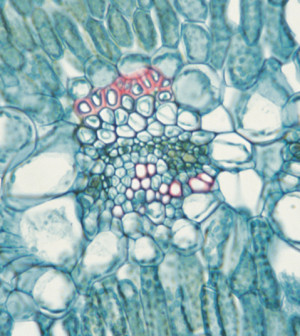- Skip Storing This Everyday Product in the Fridge Door
- Green Tea + B3 Pairing May Boost Brain Health
- Navigating Your Midlife Crisis: Embracing New Possibilities
- City Raccoons Showing Signs of Domestication
- Mapping the Exposome: Science Broadens Focus to Environmental Disease Triggers
- One Week Less on Social Media Linked to Better Mental Health
- Your Brain Changes in Stages as You Age, Study Finds
- Some Suicide Victims Show No Typical Warning Signs, Study Finds
- ByHeart Formula Faces Lawsuits After Babies Sickened With Botulism
- Switch to Vegan Diet Could Cut Your Greenhouse Gas Emissions in Half
Chemo May Prolong Lives of Some Brain Cancer Patients: Study

Adding chemotherapy to radiation treatment may add years to the lives of people with certain slow-growing brain tumors, a new study finds.
The findings come from a long-term follow-up of patients who took part in a trial that began in 1998.
All were treated for grade 2 gliomas — tumors that begin in brain cells called glial cells and are relatively slow-growing.
Earlier results from the trial had shown that adding chemotherapy to the standard treatment of radiation — with or without surgery — can help keep tumors from progressing.
Now there’s proof that it prolongs people’s lives, too.
“Until now, there hasn’t been any therapy known to improve life expectancy for these patients,” said lead researcher Dr. Jan Buckner. He is the chair of oncology at the Mayo Clinic in Rochester, Minn.
In the United States, nearly 23,000 adults were diagnosed with brain cancer in 2015, according to the U.S. National Cancer Institute (NCI). There are many different forms of brain cancer, and grade 2 gliomas are relatively rare — accounting for 5 percent to 10 percent of all adult brain cancers, Buckner’s team noted.
They are also slower-growing. A tumor’s “grade” refers to how aggressive it is, with grade 3 and 4 brain tumors typically progressing quickly and invading other tissue.
But grade 2 gliomas disproportionately affect younger adults, and most of those patients do die prematurely, according to Buckner. The question had been whether adding chemotherapy to their radiation treatment could extend their lives.
The latest study, published in the April 7 issue of the New England Journal of Medicine and funded by the NCI, recruited 251 patients between 1998 and 2002.
Half were randomly assigned to have six weeks of radiation therapy alone, while the other half had radiation followed by chemotherapy with a trio of drugs called procarbazine, CCNU and vincristine. When possible, the participants had some of the cancer surgically removed before undergoing radiation.
The patients ranged in age, but they were typically about 40 years old.
By the end of the study period, 55 percent of the study group had died. But patients who’d received chemo lived longer — typically surviving for 13 years, versus eight years among those who’d received only radiation.
“An extra five years,” Buckner said. “That’s a significant difference.”
Dr. Susan Chang, director of neuro-oncology at the University of California San Francisco Medical Center, agreed.
“We should celebrate that we have a treatment that can prolong these patients’ lives,” said Chang, who is also associate editor of Cancer.Net, the cancer information website run by the American Society of Clinical Oncology (ASCO).
“But at the same time,” she added, “we have to recognize that there’s a need for less toxic treatments.”
In this study, chemotherapy patients commonly had drops in their blood cell counts that left them vulnerable to potentially serious infections. Many also had nausea, vomiting, constipation and weight loss.
Since this study began, Chang noted, less-toxic chemo drugs have become available. “Can you use newer drugs and still get this same effect on overall survival?” she said. “We don’t know.”
Plus, not all patients given chemo did benefit, Chang pointed out. And that, she said, highlights a bigger point: Not all grade 2 glioma patients are the same. For reasons that are not yet clear, some respond well to current treatments and others do not.
“We still have a lot left to learn about grade 2 glioma,” Chang said.
The hope is to better understand the tumors at the molecular level, according to Chang. That could lead to drugs that go beyond standard chemotherapy, and specifically target abnormalities on the tumor cells.
“We want to be able to hit the tumor, and not the normal tissue,” Chang said.
As for long-term side effects, 22 percent of patients in the new study eventually showed some type of brain effect, such as memory difficulties — but those were related to the radiation, Buckner said, not the chemotherapy.
That leads to other questions, according to Chang: Is it possible to prevent those radiation effects? Or, could patients do just as well getting chemo without radiation?
For now, Buckner suggested that glioma patients talk with their doctors about whether chemo is right for them. He noted that fertility problems are one potential side effect, so younger patients sometimes want to delay the treatment.
Chang agreed. “The key point is, when you’re talking to your doctor about treatment options, this [chemo regimen] needs to be part of the discussion.”
More information
The American Society of Clinical Oncology provides an overview on brain tumors.
Source: HealthDay
Copyright © 2025 HealthDay. All rights reserved.










